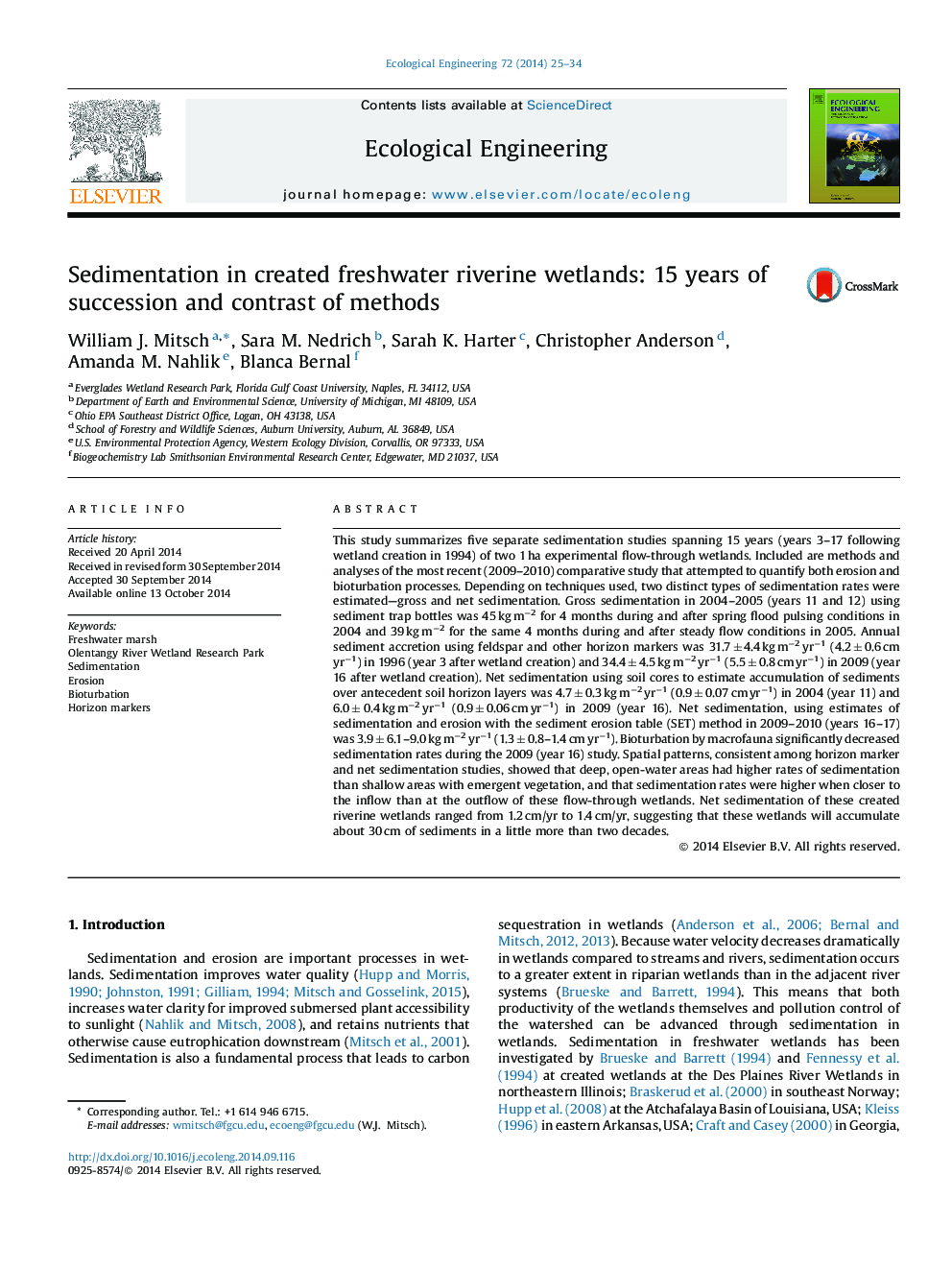| Article ID | Journal | Published Year | Pages | File Type |
|---|---|---|---|---|
| 4389355 | Ecological Engineering | 2014 | 10 Pages |
This study summarizes five separate sedimentation studies spanning 15 years (years 3–17 following wetland creation in 1994) of two 1 ha experimental flow-through wetlands. Included are methods and analyses of the most recent (2009–2010) comparative study that attempted to quantify both erosion and bioturbation processes. Depending on techniques used, two distinct types of sedimentation rates were estimated—gross and net sedimentation. Gross sedimentation in 2004–2005 (years 11 and 12) using sediment trap bottles was 45 kg m−2 for 4 months during and after spring flood pulsing conditions in 2004 and 39 kg m−2 for the same 4 months during and after steady flow conditions in 2005. Annual sediment accretion using feldspar and other horizon markers was 31.7 ± 4.4 kg m−2 yr−1 (4.2 ± 0.6 cm yr−1) in 1996 (year 3 after wetland creation) and 34.4 ± 4.5 kg m−2 yr−1 (5.5 ± 0.8 cm yr−1) in 2009 (year 16 after wetland creation). Net sedimentation using soil cores to estimate accumulation of sediments over antecedent soil horizon layers was 4.7 ± 0.3 kg m−2 yr−1 (0.9 ± 0.07 cm yr−1) in 2004 (year 11) and 6.0 ± 0.4 kg m−2 yr−1 (0.9 ± 0.06 cm yr−1) in 2009 (year 16). Net sedimentation, using estimates of sedimentation and erosion with the sediment erosion table (SET) method in 2009–2010 (years 16–17) was 3.9 ± 6.1–9.0 kg m−2 yr−1 (1.3 ± 0.8–1.4 cm yr−1). Bioturbation by macrofauna significantly decreased sedimentation rates during the 2009 (year 16) study. Spatial patterns, consistent among horizon marker and net sedimentation studies, showed that deep, open-water areas had higher rates of sedimentation than shallow areas with emergent vegetation, and that sedimentation rates were higher when closer to the inflow than at the outflow of these flow-through wetlands. Net sedimentation of these created riverine wetlands ranged from 1.2 cm/yr to 1.4 cm/yr, suggesting that these wetlands will accumulate about 30 cm of sediments in a little more than two decades.
